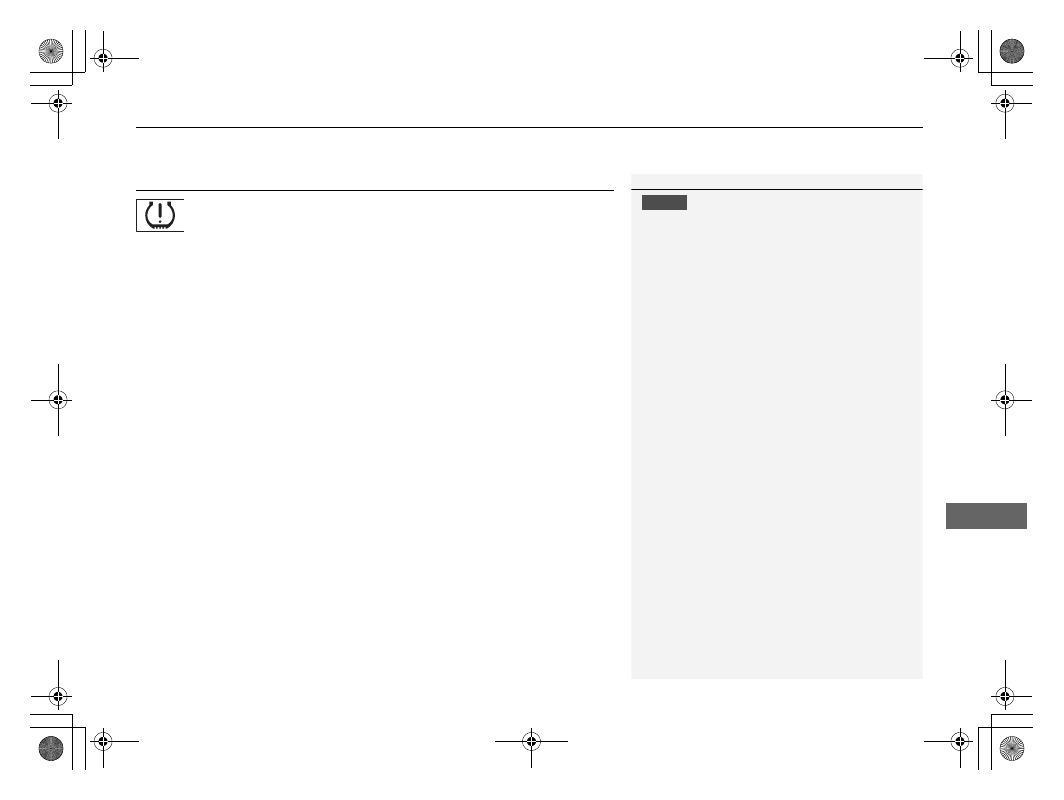Honda Accord Sedan (2016 year). Instruction - part 37

577
uu
Indicator, Coming On/Blinking
u
If the Low Tire Pressure/TPMS Indicator Comes On or Blinks
Han
d
lin
g the U
n
expected
If the Low Tire Pressure/TPMS Indicator Comes On or
Blinks
■
Reasons for the indicator to come on or blink
A tire pressure is significantly low, or the TPMS has not been calibrated.
If there is a problem with the TPMS or the compact spare tire is installed,
the indicator blinks for about one minute, and then stays on.
■
What to do when the indicator comes on
Drive carefully and avoid abrupt cornering and hard braking.
Stop your vehicle in a safe place. Check the tire pressure and adjust the
pressure to the specified level. The specified tire pressure is on a label on
the driver side doorjamb.
u
Calibrate the TPMS after the tire pressure is adjusted.
■
What to do when the indicator blinks, then remains on
Have the tire inspected by a dealer as soon as possible. If the compact
spare tire causes the indicator to blink, change the tire to a full-size tire.
The indicator goes off after driving for a few miles (kilometers).
u
Calibrate the TPMS after a full-size tire is reinstalled.
1
If the Low Tire Pressure/TPMS Indicator Comes On or Blinks
NOTICE
Driving on an extremely underinflated tire can cause
it to overheat. An overheated tire can fail. Always
inflate your tires to the prescribed level.